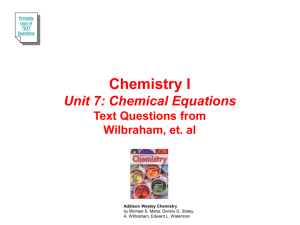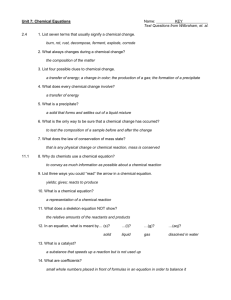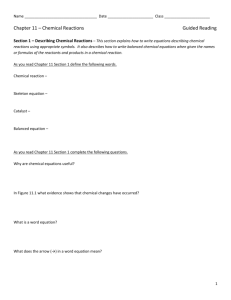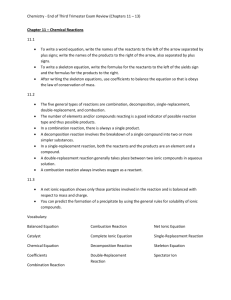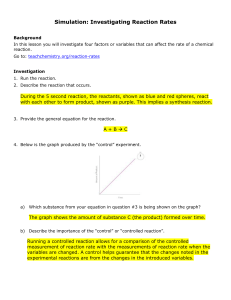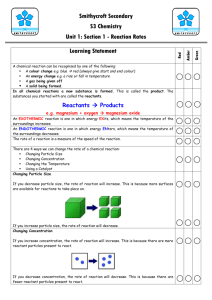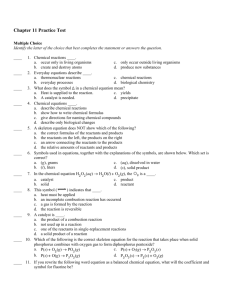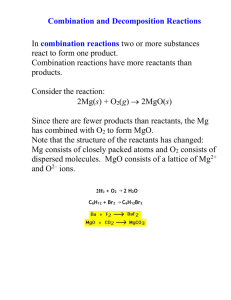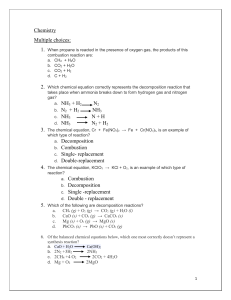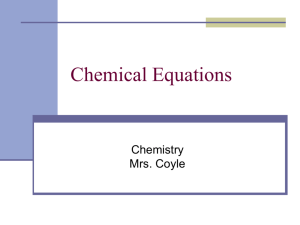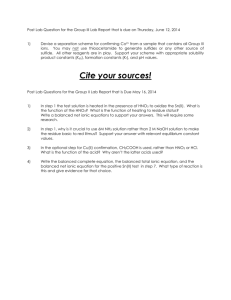Unit 1: Introduction to Chemistry
advertisement
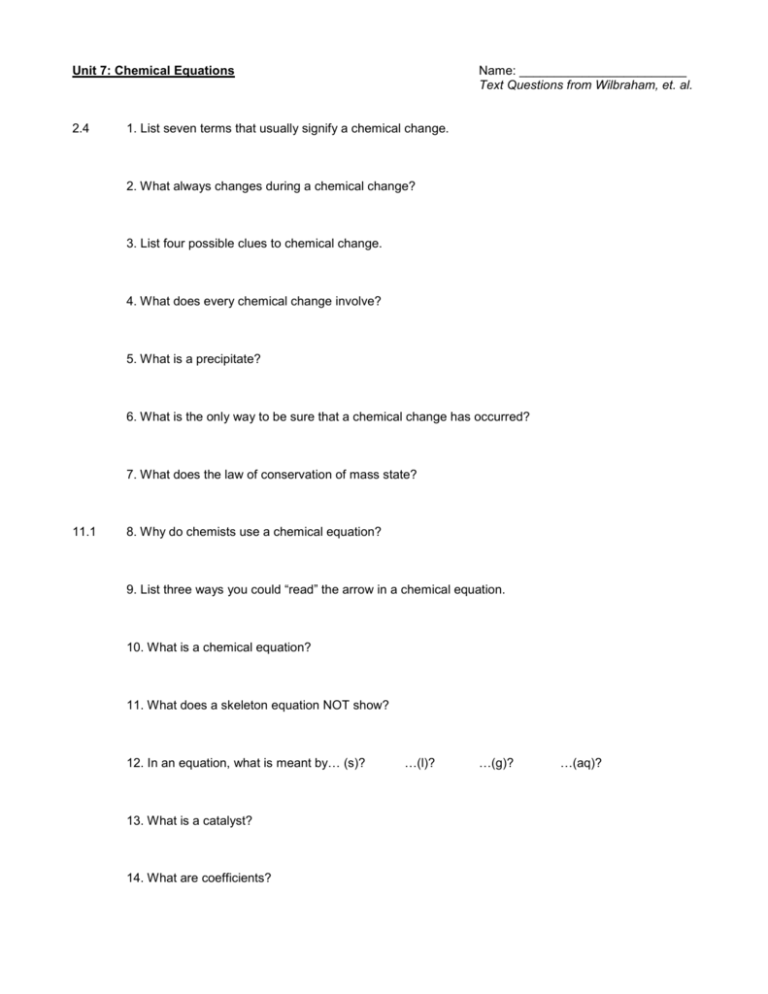
Unit 7: Chemical Equations 2.4 Name: ________________________ Text Questions from Wilbraham, et. al. 1. List seven terms that usually signify a chemical change. 2. What always changes during a chemical change? 3. List four possible clues to chemical change. 4. What does every chemical change involve? 5. What is a precipitate? 6. What is the only way to be sure that a chemical change has occurred? 7. What does the law of conservation of mass state? 11.1 8. Why do chemists use a chemical equation? 9. List three ways you could “read” the arrow in a chemical equation. 10. What is a chemical equation? 11. What does a skeleton equation NOT show? 12. In an equation, what is meant by… (s)? 13. What is a catalyst? 14. What are coefficients? …(l)? …(g)? …(aq)? 15. A balanced equation is one in which each side of the equation has… 16. In a reaction, the atoms are the same atoms; they are just ________________. 17. The first step in writing a balanced equation is to… 18. Then use coefficients to… 19. If a coefficient isn’t written, it is understood to be ___. 11.2 20. If you can recognize a reaction as being a particular type, what MIGHT you be able to do? 21. List the five general types of reactions. 22. What is a combination reaction? 23. In all combination reactions, the product is a ________ ___________. 24. What is a decomposition reaction? 25. Decomposition reactions involve… …how many reactants? …how many products? 26. Most decomposition reactions require energy in one of what three forms? 27. What is a single-replacement reaction? 28. How can you identify a single-replacement reaction? 29. On the activity series, a reactive metal will replace any metal listed _________ it. 30. What happens to the activity of the halogens as you go down the group? 31. What is a double-replacement reaction? 32. Double-replacement reactions usually… …take place in… …and produce one of what three things? 33. What is a combustion reaction? 34. What is a hydrocarbon? 35. The complete combustion of a hydrocarbon produces _________ _________ and _________. 36. The number of elements and/or compounds reacting is a good indicator of what two things? 11.3 37. Many important chemical reactions take place in ____________ ____________. 38. What does dissociate mean? 39. What does a complete ionic equation show? 40. A spectator ion is one that not only appears on both sides of an equation, but also… 41. What does a net ionic equation show? 42. Of what must you make sure when you are writing net ionic equations? 43. The solubility of the new compounds that form determines what? 12.2 44. A chemical equation relates such things as number of moles and what three types of particles? 45. What is essential for all calculations involving amounts of reactants and products? 46. What does a balanced chemical equation allow you to determine? 47. What is the most important interpretation of the equation for the production of ammonia? 48. What is a mole ratio? 18.1 49. What is a rate? 50. According to collision theory, chemical particles must ___________ in order to form products, and with sufficient ____________. 51. What happens if particles lack the necessary kinetic energy to react? 52. What is the activation energy? 53. What is an activated complex? 54. Typically, the lifetime of an activated complex is about ________. 55. The transition state is another name for the ______________ _____________. 56. For what two reasons does increasing the temperature cause products to form faster? 57. When the concentration of reactants is increased, the frequency of the collisions _____________. 58. Why are flames forbidden in areas where bottled oxygen is in use? 59. An increase in the surface area increases what two things? 60. Why is coal dust mixed with air an explosive hazard? 61. A catalyzed reaction has a __________ activation energy that does an uncatalyzed reaction. 62. Why does a catalyst NOT appear as a reactant or a product? Where is a catalyst often written in an equation? 63. Biological catalysts are called ______________. 64. What is an inhibitor?
